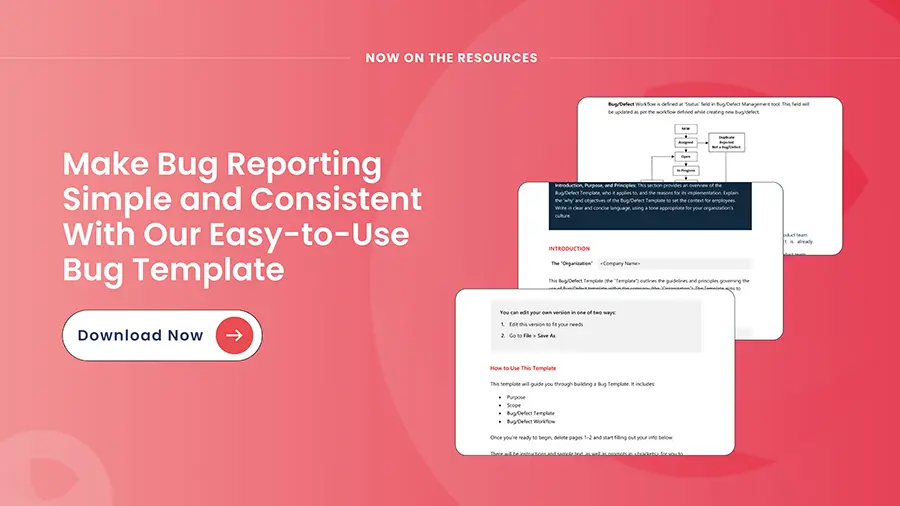To survive in this digital era, companies are introducing delivery applications faster and DevOps is acting as a key enabler. DevOps succeeds because it brings great synchronicity between Development and Operations teams by automating repetitive tasks and buying time for more human coordination and decision making.
A recent report indicates that only 10% of companies are highly successful in rapid software development and deployment. Although DevOps has been a real game-changer, the results are not very satisfying when it comes to value-delivery or value-creation for companies.
One of the most significant bottlenecks for DevOps adoption is testing. The increasing complexity of processes and the lack of a standard approach to testing across enterprise silos add to the frustration. At the same time, QA teams are looking to optimize their agile processes to reduce maintenance costs and testing efforts.
To successfully automate the legacy, desktop, web, and mobile apps with a single tool, enterprises are looking to standardize and automate their testing setup. This is where the concept of automation testing framework comes in.
“The global Automation testing market size is expected to grow from USD 20.7 billion in 2021 to USD 49.9 billion by 2026.”
– Market Research
No matter what tools organizations use, the automation testing concept helps standardize their test assets. This article discusses the high-level overview of each type of Framework and how they can contribute to the success of any DevOps process by embedding an automated testing process.
What is Automation Testing Framework?
The term “Automation” itself explains the automatic handling of various processes. Whereas Automation Testing means a series of tests are executed continuously without any human intervention ensuring the application behaves as expected.
Automation Testing offers quick result results to kickstart a project, it allows companies to run testing at a faster pace and with multiple data sets. This low-code automation and artificial intelligence tools automate testing for enterprises.
Before we start discussing test automation frameworks, let’s first understand what a framework is.
A framework is a combination of rules and processes, there has been a set of protocols and guidelines to abide by. Likewise, Automation Testing Framework is a collection of tools, features, and processes.
It amalgamates functions like libraries, test data, and various reusable modules to create an environment where automated test scripts can be executed. Additionally, it builds an ecosystem that empowers test automation engineers to continuously learn and unlearn to make the test automation framework successful.

Types of Frameworks
Now that you know what a test automation framework is and what its components are, let’s see which kinds of frameworks are available. There are six common types of test automation frameworks. Choosing the Framework that is right for you when building out a test plan is essential.
Here we go!
#1 Linear Automation Framework
| Pros | Cons |
| No need to write custom code, eliminating the need for expertise in testing automation | Scripts are not reusable |
| Fastest ways to generate test scripts | Test cases cannot be re-run with multiple sets and it needs to modify if the data is altered |
| Test workflow is easier to understand | This model is not scalable |
| Comes with record and playback features so no efforts are required in planning and implementing this framework | Maintenance is considered a hassle |
#2 Modular Based Testing Framework
| Pros | Cons |
| Creating test cases needs less effort | Multiple datasets can’t be used |
| Test scripts for different modules can be reused | To set up the framework programming knowledge is required |
#3 Library Architecture Testing Framework
| Pros | Cons |
| Test maintenance and scalability are easier and more cost-effective. | Need to write and analyze the common functions within the test scripts. |
| The framework has a higher degree of reusability | Take more time to develop test scripts |
#4 Data-Driven Framework
| Pros | Cons |
| Saves time by executing more tests faster | Require highly-experienced tester |
| Tests can be executed with multiple data sets. | Setting up a data-driven framework is time-consuming |
#5 Keyword-Driven Framework
| Pros | Cons |
| Test scripts can be built independently of the application | The initial setup cost of the framework is high |
| A single keyword can be used across multiple test scripts | Time-consuming and complex |
| Minimal scripting knowledge is needed | Keywords can be a hassle to maintain |
| Code is reusable | Require highly-experienced tester |
What Is the Purpose of a Test Automation Framework?
- Reuse of components and code during the design and development of automated test scripts increases efficiency.
- Maintains uniformity across multiple test scripts for reduced dependence on individual test cases by providing a structured methodology
- Provides correct root-cause analysis for the system under test with minimum human intervention and is reliable for the issue and bug detection
- Tests are automatically selected according to test scenarios, reducing the dependency on teams.
- Adjusts test scope dynamically according to changes in test strategy or system conditions
- Enhances resource utilization and maximizes returns
- Automates continuous testing with minimal human intervention

Why use Automated Testing Framework
The need for testing teams to catch up with delivery teams is driving the need for automation.
A Framework simplifies debugging instead of having a messy collection of test data & scripts. A Test Automation Framework can be used to create, execute, and efficiently report on automated test scripts.
The automation testing platforms are designed specifically to create an environment in which test scripts can be executed. It makes it easier to identify different recovery scenarios and handle them seamlessly. Let’s have a look at the benefits.
- Resources Optimization:
Test automation frameworks provide a set of processes that need to tally with required resources. According to organizational needs, it can facilitate the use of different resources. The higher the adoption flexibility, the better your resource optimization will be. - Increased and Faster Testing Coverage:
Test automation frameworks increase the scope of large volume testing. For example, new applications/devices/features are launched every day, and it is quite impossible to perform manual testing to cover different datasets in a short time. Whereas the automation framework provides the foundation to run thousands of tests simultaneously. - Simultaneous Testing:
In this case of automated testing, all testers need to do is run test scripts on different devices. Testers can quickly generate comparative test reports by enabling simultaneous testing of different types of devices. - Enhance Speed and Reliability:
Suppose you have multiple testing scenarios, if you are running manual testing, you have to go scenario by scenario. You will get the test results in less time if you’re using a framework, as you can simultaneously run all the scenarios. - Maximize ROI:
Test Automation Framework reduces the need for more staff as well as saves time. In an automated testing environment, a QA engineer can carry out all the related work like running scripts or configuring Framework. And this ultimately boosts the ROI. - Continuous Testing:
The significance of continuous integration and continuous delivery/deployment can’t be denied. Test automation frameworks are crucial in achieving continuous testing. A fully automated testing pipeline is the surest way to ensure your code reaches production as quickly as possible.
The automation testing framework encourages running your suite of automated tests continuously and enables the creation of test scripts and automatic execution.
Final Thoughts
There is a need for faster releases and quality products when agile and DevOps practices are on the go. While running the test scripts, test automation frameworks provide several advantages like – faster defect detection, reusable test scripts, and minimum intervention by humans.
However, enterprises must work with specialized software testing providers. Enhops works with Fortune 500 companies to strengthen their digital transformation programs by embedding quality engineering in their software development lifecycle. To do so, we draw on the deep industry experience of our automation experts to build a tailored Framework for the client’s testing function.
Enhops’s revolutionary test automation solution, Enwita, is a powerful platform to automate Web, Web Services/API, and Mobile applications. It is primarily designed to support various applications like ERP (Oracle EBS, SAP, PeopleSoft, etc.), CRM, AngularJS, etc.
Contact our experts to know how we can help you to introduce automation testing for your business. Or email us at marketing@enhops.com




